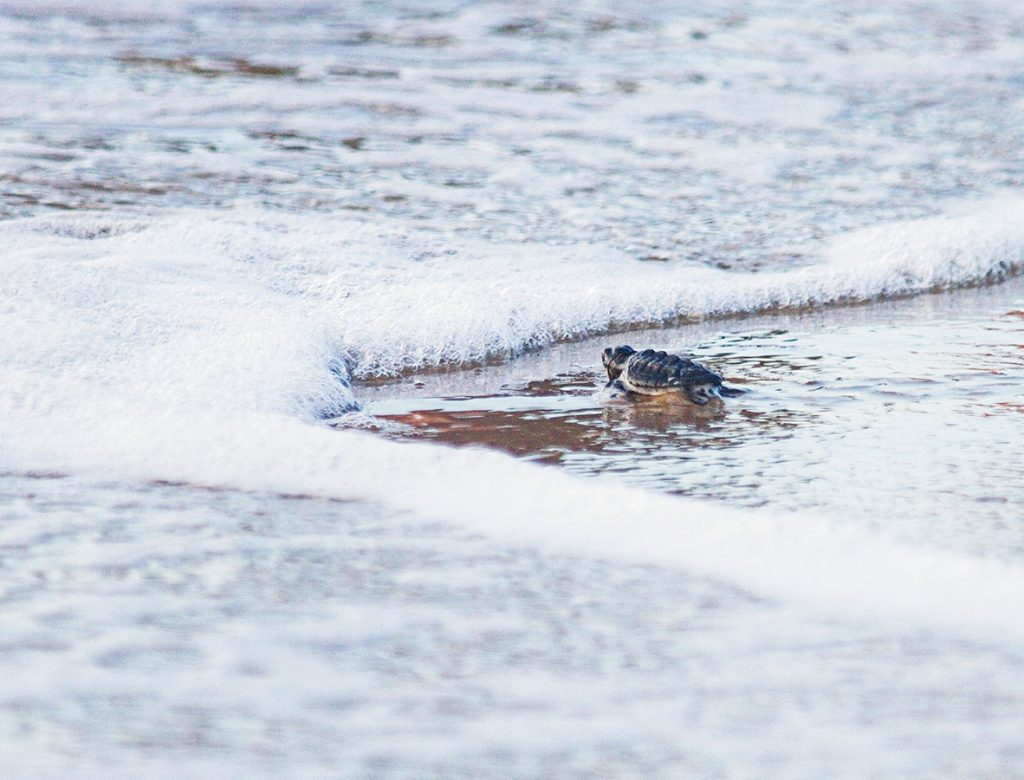By Kathryn Stamps and David Seigerman
Kemp’s Ridley Sea Turtle Day (June 10) provides an annual opportunity to celebrate the smallest and rarest sea turtle in the world. Known for its heart-shaped shell and strong muscles, it is the second-most common sea turtle in New York, tending to arrive in Long Island Sound from Mexico or Texas during its juvenile or “coastal” stage of life.
But the Kemp’s ridley sea turtle is a critically endangered species that continues to need habitat protection. Save the Sound takes a multi-pronged approach to ensure that Long Island Sound can continue to provide a safe haven for sea turtles and other endangered species found across the region.
Recently, Save the Sound attorneys filed formal comments opposing the proposed removal of habitat protection from the Endangered Species Act regulations, arguing the removal would be inconsistent with the requirements of the Act and that habitat protection is a critical tool in safeguarding vulnerable wildlife. Kemp’s ridley sea turtle, the Roseate Tern (whose primary breeding ground in New York is Great Gull Island, between Plum Island and Fishers Island), and the Piping Plover are among the species in the Sound region that could be put at further risk by a proposed regulatory change. Save the Sound also joined a national coalition of more than 60 environmental organizations, led by Earthjustice, in extensive comments further detailing the critical importance and ecological and legal basis of maintaining the strength of the contested regulation.
At the same time, Save the Sound’s New York policy team worked on passing the Horseshoe Crab Protection Act in Albany for the second straight year (last year’s bill was vetoed by Governor Kathy Hochul in December). While not listed as endangered, the American horseshoe crab is considered “vulnerable to extinction” by the International Union for the Conservation of Nature, and its populations in the Long Island Sound region have declined precipitously, dropping from “good” in the Atlantic States Marine Fisheries Commission’s 2009 assessment to “poor” just a decade later, the result of overfishing and habitat loss.
The Horseshoe Crab Protection Act would prohibit the taking of horseshoe crabs for commercial and biomedical purposes in New York, mirroring the protections already in place across the Sound in Connecticut. That’s not just good news for the horseshoe crab—a species more than 400 million years old that has survived five mass extinctions—but for the animals that depend on their eggs for food. That includes fish, sea turtles, and migratory birds like the Red Knot, which, according to recent reports, New York will soon add to an updated state list of endangered and threatened species.

A Kemp’s ridley sea turtle at South Padre Island, TX. Many of these turtles eventually make their way into Long Island Sound, even as far west as Davids Island off New Rochelle, New York. © Burton, Robert, Public Domain
Habitat protection efforts extend beyond public comments and policy. Over the last decade and a half, Save the Sound’s ecological restoration team has opened dozens of miles of river passage in Connecticut by removing dams and improving fish passage access, which benefits species including trout, American eel, and alewife, a keystone species of river herring whose numbers have diminished dramatically. In 2023, Save the Sound and partners removed Dana Dam on the Norwalk River, reconnecting 10 miles of river habitat and restoring the opportunity for fish to return to spawning grounds that had been inaccessible for 80 years.
Save the Sound’s on-the-water Soundkeeper team continues its work to restore eelgrass in Long Island Sound. Healthy, abundant eelgrass meadows prevent coastal erosion, protect coastlines from storm surge, and sequester carbon (seagrasses capture carbon at faster rates than terrestrial forests). And, of course, they also provide food and habitat for a wide range of aquatic life—including those sea turtles and horseshoe crabs.
Protecting the rich and diverse habitat provided by Long Island Sound for all its marine life—whether endangered, threatened, vulnerable, or thriving—requires stewardship, science, public policy, investment, and partnership. We will continue to work with our collective resources to ensure this special and resilient place can provide a home to the wonderous array of species that rely on it.
Save the Sound leads environmental action across the Long Island Sound region to protect the Sound and its rivers, fight climate change, save endangered lands, and work with nature to restore ecosystems. More info at savethesound.org. ■

